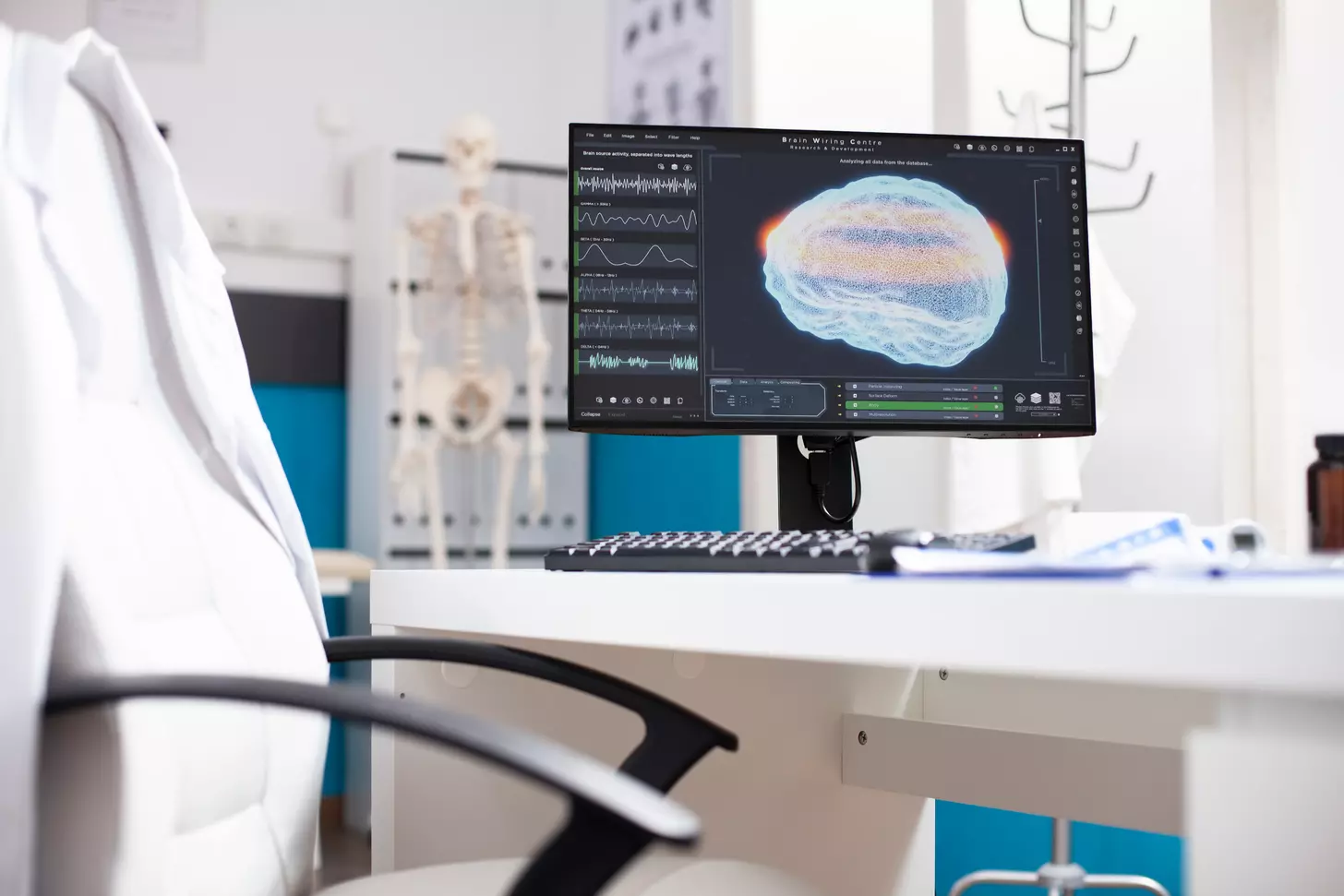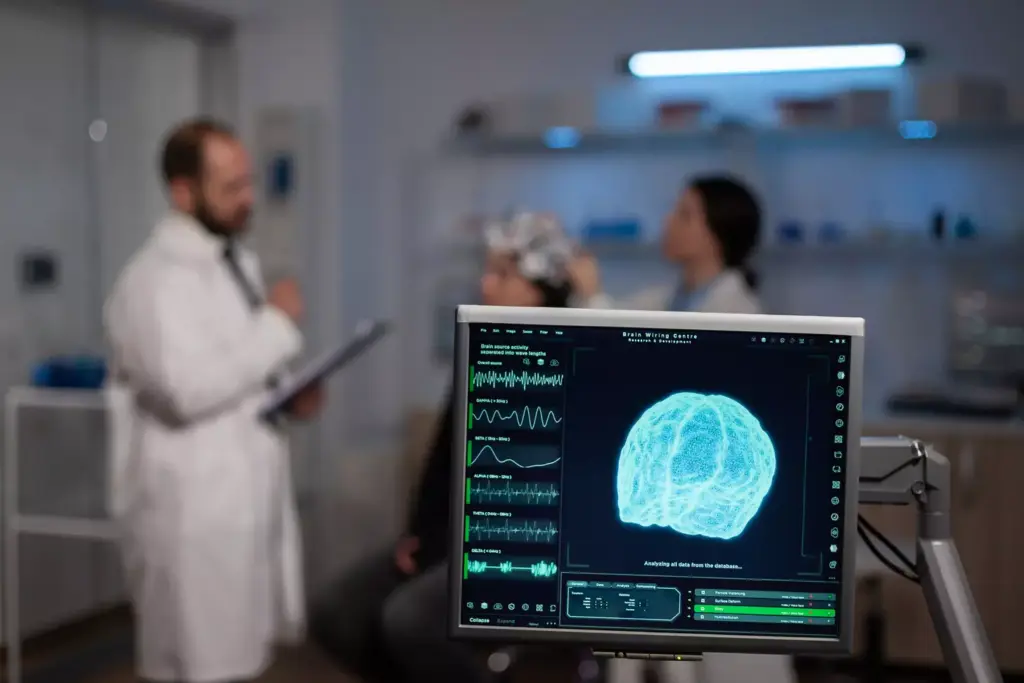Last Updated on November 5, 2025 by Bilal Hasdemir

At Liv Hospital, we know how Arnold Chiari malformation affects people. It can cause severe headaches and other neurological problems. For those with symptoms, decompression surgery is often the best option, mainly for Chiari type 1.
This surgery removes a small part of the skull’s base. It helps to ease pressure on the cerebellum. This way, it helps the cerebrospinal fluid flow properly again. We aim to offer top-notch care and focus on each patient’s needs, with both skill and kindness.

The Arnold Chiari Malformation is a condition where parts of the brain stick out into the spinal canal. This happens when the cerebellar tonsils go below the foramen magnum. It can cause many neurological symptoms.
Chiari Type 1 Malformation is when the cerebellar tonsils slide down into the upper spinal canal. It can cause headaches, neck pain, and numbness or tingling in the hands and feet. It can be present at birth or develop later in life.
In a normal brain, the cerebellum and brainstem stay inside the skull. The cerebellar tonsils are above the foramen magnum. But, Chiari Malformation makes the tonsils go into the spinal canal. This can press on the brainstem and mess up cerebrospinal fluid flow.
People with Chiari Type 1 Malformation might feel numbness or tingling in their extremities, dizziness, and balance problems. They might also have severe headaches, fatigue, and muscle weakness. These symptoms can really affect their daily life and how they feel.
“Chiari Malformation can cause a wide range of symptoms, from mild discomfort to severe neurological deficits. Understanding the condition is key for effective management and treatment.”
Knowing about Arnold Chiari Malformation helps doctors create better treatment plans. They can tailor care to meet each person’s needs.

The exact causes of Arnold Chiari Malformation are not fully understood. But, research has found several risk factors. Knowing these can help in diagnosing and managing the condition.
Research points to a genetic link in Arnold Chiari Malformation. Studies have shown that it can run in families. But, the exact genes involved are not yet known.
Families with Chiari Malformation suggest a genetic role. More research is needed to understand the genetic mechanisms.
Congenital factors are thought to play a role in Arnold Chiari Malformation. The shape and size of the posterior fossa, at the base of the skull, are important. They can affect the condition’s development.
Arnold Chiari Malformation is often seen as a congenital condition. But, it can also be acquired. Trauma or other conditions affecting the spine and skull can cause Chiari-like symptoms.
Acquired causes include conditions that affect the brain or spine structure. These can lead to symptoms similar to Chiari Malformation. Understanding these causes is key for proper diagnosis and treatment.
Chiari malformation can be very serious if not treated. It affects the cerebellum, causing pressure on the brain and spinal cord. This leads to various neurological symptoms.
Without treatment, Chiari malformation can cause serious problems. One major issue is syringomyelia. This is when a fluid-filled cavity forms in the spinal cord. It can damage the spinal cord, causing pain, weakness, and loss of sensation.
Another complication is hydrocephalus. This is when too much cerebrospinal fluid builds up in the brain. It can lead to headaches, nausea, and vomiting. In severe cases, it can be life-threatening.
Chiari malformation can greatly affect a person’s quality of life. It can cause chronic pain, headaches, and other neurological symptoms. These symptoms can make everyday tasks hard.
Patients may feel tired, dizzy, and have trouble concentrating. This can make it hard to work or socialize. The emotional impact of living with Chiari malformation is also significant. Anxiety, depression, and feelings of isolation are common.
In severe cases, Chiari malformation can be life-threatening. It can cause problems with breathing and the heart. If not treated, these problems can be fatal.
It’s important for patients to work closely with their doctors. Regular check-ups and timely treatment can help manage the condition. This can improve outcomes and reduce the risk of serious problems.
To diagnose Chiari malformation, we use imaging studies and clinical checks. These tools help us understand the condition well. Then, we decide the best treatment plan.
Imaging is key in diagnosing Chiari malformation. The main tool is Magnetic Resonance Imaging (MRI). It shows detailed images of the brain and spinal cord.
MRI helps us see how far the cerebellar tonsils have herniated. It also checks for syringomyelia or other issues.
At times, a Computed Tomography (CT) scan is used, mainly in emergencies. But MRI is the top choice for diagnosing Chiari malformation. This is because MRI offers better images of soft tissues.
A thorough neurological check is vital. We look at various functions like:
This check helps us see how Chiari malformation affects the brain and nerves. It guides our treatment choices.
It’s important to tell Chiari malformation types apart. This ensures we give the right care. The main types are:
| Type | Description | Key Features |
|---|---|---|
| Chiari Type 1 | Cerebellar tonsillar herniation below the foramen magnum | Often diagnosed in adulthood, may be asymptomatic or present with headaches and neck pain |
| Chiari Type 2 | More severe herniation with involvement of the brainstem and cerebellum | Typically diagnosed in infancy or early childhood, often associated with myelomeningocele |
Knowing the exact type of Chiari malformation is critical. It helps us choose the right treatment and predict outcomes.
Decompression surgery is a key treatment for Arnold Chiari Malformation. It aims to ease pressure on the cerebellum and spinal cord. This surgery is complex and requires careful planning.
The posterior fossa decompression technique is a main approach in this surgery. It involves removing part of the skull to make room for the cerebellum. The main goal is to reduce pressure and improve cerebrospinal fluid flow.
Each surgery is unique, based on the patient and the surgeon’s expertise. Some common variations include:
These choices depend on the patient’s condition and the malformation’s extent.
The surgery is done under general anesthesia for the patient’s comfort. It usually takes several hours. Throughout the surgery, patients are closely watched to avoid complications.
Knowing about decompression surgery helps patients prepare for it. They can understand the technique, possible variations, and what to expect during and after the surgery.
Decompression surgery for Arnold Chiari Malformation is a common treatment. But, it’s key to know its expected outcomes and success rates. The surgery’s success depends on several important factors.
Many studies show that decompression surgery can greatly improve symptoms. The success rate ranges from 70% to 90%. For example, a study in the Journal of Neurosurgery: Spine found that 85% of patients saw symptom improvement after posterior fossa decompression.
Here’s a breakdown of symptom improvement rates:
| Symptom | Improvement Rate |
|---|---|
| Headaches | 80% |
| Neck Pain | 75% |
| Dizziness | 70% |
| Numbness/Tingling | 65% |
The success of decompression surgery depends on several factors. These include the malformation’s severity, other health conditions, and the patient’s overall health. Pre-operative syringomyelia also plays a role. Patients with syringomyelia often see more symptom improvement after surgery.
Other factors include:
Decompression surgery can greatly improve symptoms for many. But, it’s important to know its limitations. The surgery may not remove all symptoms, and some patients may continue to experience issues.
Also, surgery doesn’t fix the underlying cause of Chiari Malformation. It’s related to brain and skull structural issues. So, while surgery can help, it’s not a cure.
It’s important for patients with Arnold Chiari Malformation to know about the risks of decompression surgery. The surgery is usually safe, but there are possible complications. Knowing about these can help patients make better choices about their treatment.
Like any surgery, decompression surgery has risks. These include infection, cerebrospinal fluid leakage, and pseudomeningocele formation. These issues can usually be treated with medical care. But sometimes, they might need more surgery.
Common Complications:
There are also serious but rare risks with decompression surgery. These include neurological damage, stroke, and death. These are very rare. It’s key for patients to talk to their doctor about these risks to understand their chances.
Rare but Serious Risks:
Some patients may face long-term issues after surgery. These can be chronic pain, ongoing neurological symptoms, and scarring. The chance of these problems depends on the severity of the malformation and the patient’s health.
| Complication | Description | Management |
|---|---|---|
| Chronic Pain | Long-term pain that may persist after surgery | Pain management strategies, physical therapy |
| Persistent Neurological Symptoms | Ongoing neurological issues despite surgery | Rehabilitation, symptom management |
| Scarring | Formation of scar tissue at the surgical site | Physical therapy, scar management techniques |
It’s vital for patients to talk to their doctor about the risks and complications of decompression surgery. Understanding these risks helps patients make informed decisions. It also prepares them for what might happen.
The journey to recovery after Chiari decompression surgery has several key steps. We will guide you through them. Knowing what to expect can make the process easier and help you get the best results.
After Chiari decompression surgery, you’ll usually stay in the hospital for a few days to a week. Our medical team will watch over you closely, managing your pain and looking for any complications. Right after surgery, you’ll need to rest and do little activity to help your body heal.
We make sure you’re comfortable and stable before you go home. Our team will give you detailed instructions on how to care for your wound, manage your medication, and watch for any signs of complications.
Managing pain well is key after Chiari decompression surgery. We use a mix of medications, physical therapy, and other treatments to control your pain. Each plan is tailored to your needs.
Our pain management plans aim to reduce discomfort and aid in healing. We ask you to tell us about your pain levels often so we can adjust your treatment as needed.
After surgery, you’ll need to avoid heavy lifting, bending, or strenuous activities for a few weeks. This helps your body heal properly.
Slowly, you can start doing more things under our healthcare team’s guidance. We’ll give you personalized advice on when it’s okay to drive again, go back to work, and start physical activities.
Regular follow-up care is vital for recovery. We schedule appointments to check on your healing, remove stitches or staples, and address any concerns or complications.
Our team works closely with you to ensure a smooth recovery. We provide a follow-up care schedule that includes:
| Follow-up Appointment | Timing | Purpose |
|---|---|---|
| First Follow-up | 1-2 weeks post-surgery | Wound check, suture removal, assess healing |
| Second Follow-up | 4-6 weeks post-surgery | Evaluate recovery progress, adjust activities |
| Third Follow-up | 3-6 months post-surgery | Assess long-term recovery, address any concerns |
By following this structured schedule, we can quickly spot and handle any issues. This ensures the best outcome for our patients.
Managing Arnold Chiari Malformation doesn’t always mean surgery. Many alternative treatments can help ease symptoms. For some, a mix of non-surgical options and pain management can control their condition well.
Non-surgical management is good for those with mild symptoms or who can’t have surgery. It includes regular check-ups, lifestyle changes, and physical therapy. These help improve neck strength and mobility.
It’s also important to avoid activities that make symptoms worse, like heavy lifting. Keeping a healthy weight and doing low-impact exercises like yoga or swimming can also help manage the condition.
Pain management is key in treating Arnold Chiari Malformation. We use different methods to help patients manage their pain. These include medication, physical therapy, and alternative therapies like acupuncture or chiropractic care.
Medications like pain relievers, muscle relaxants, and anti-seizure drugs may be used. It’s important to work with a healthcare provider to find the right medication and dosage.
Surgery might not be needed if symptoms are mild or if the condition is found by chance during tests for other reasons. We keep a close eye on these patients to make sure their condition doesn’t get worse.
For those with more severe symptoms, trying non-surgical management first is often recommended. This lets us see if alternative treatments work before deciding on surgery.
Understanding Arnold Chiari Malformation is key for patients to make smart choices about their care. We’ve looked at the condition’s diagnosis, treatment options, and possible results. This knowledge helps patients feel confident in their treatment path.
There are different ways to treat Chiari malformation, and often a mix of surgery and other treatments works best. Decompression surgery is a common choice to ease pressure on the brain and spinal cord. Knowing all about the condition and its treatments is vital for good management.
When deciding on Chiari treatment, weighing the good and bad of each option is important. This way, patients can aim for the best results and live better lives. We aim to offer top-notch healthcare and support to international patients. This helps them make informed choices about their care.
Chiari malformation is a brain and spinal cord issue. It happens when the cerebellar tonsils push into the spinal canal. This can cause many symptoms.
Decompression surgery helps relieve pressure on the brain and spinal cord. It’s often needed for people with Chiari malformation who have symptoms.
Research shows that Arnold Chiari malformation might be linked to genetics and other factors. But, we don’t know all the causes yet.
Untreated Chiari malformation can lead to serious problems. These include syringomyelia and hydrocephalus. These issues can really affect a person’s life.
Doctors use MRI and neurological tests to diagnose Chiari malformation. They look at different types to find the right diagnosis.
This technique is a surgery to relieve pressure on the brain and spinal cord. It involves removing part of the skull and sometimes other structures.
Surgery can improve symptoms, but results vary. It might not solve all problems or conditions.
Surgery is usually safe, but it can have risks. These include common problems, rare serious issues, and long-term effects.
Recovery includes a hospital stay and managing pain. You’ll also have to follow activity rules and a care plan to heal well.
Yes, there are non-surgical options and pain management. These might be for patients who can’t have surgery or don’t need it.
Chiari malformation can be very serious. It can cause big problems and affect life quality if not treated right.
We don’t know all the causes of Arnold Chiari malformation. But, research points to genetics, birth defects, and other factors.
Chiari malformation can cause strange neurological symptoms. These are because of the brain and spinal cord compression.
Subscribe to our e-newsletter to stay informed about the latest innovations in the world of health and exclusive offers!
WhatsApp us